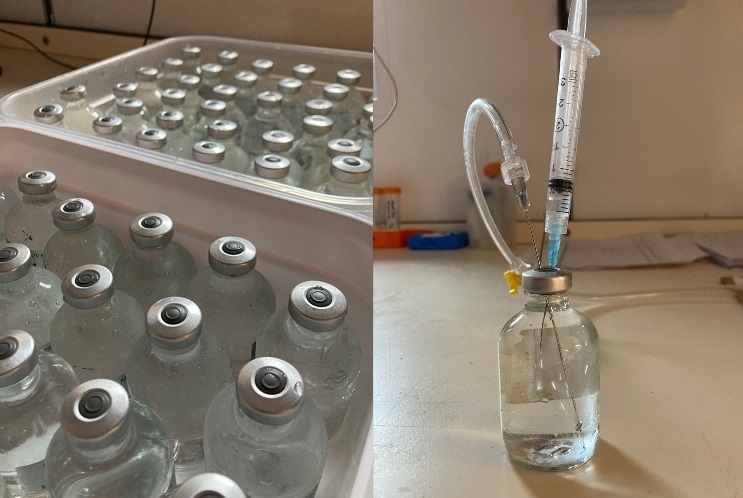
By Elizabeth Wallace
Here aboard Meteor, there are many interrelated projects happening which will all add to our understanding of this complex region of the ocean, the Subpolar North Atlantic. One such project is the measurement of nitrous oxide (N2O) gas. You may be familiar with N2O as the “laughing gas” used during surgical procedures, but it is also very important in the Earth’s climate system – N2O is a greenhouse gas, and the amount that is present in the ocean is controlled in part by marine microbes.
Past measurements have not yet been able to determine whether this region of the ocean is a “source” or a “sink” of N2O, whether N2O moves from the atmosphere to the ocean water or the other way around. This is particularly important in the Labrador Sea because some of the water here moves to the bottom of the ocean and does not touch the atmosphere again for a long time.
On board, water samples are collected from the Niskin bottles on CTD casts in order to measure the N2O concentration at different locations and depths. The N2O cannot be measured on the ship, so the samples need to have a little bit of poison added so that the microbes inside die (sorry, microbes) and cannot change the amount of N2O before the measurements are made back on land. Samples are also being collected to measure other nitrogen-containing molecules, like ammonium, nitrite, and nitrate, since they are important nutrients for biological activity and are often influential in the formation of N2O. The goal for the whole cruise is about 2000 samples!
Combining measurements of N2O with the other measurements of ocean dynamics happening on board will begin to provide insight into the full story of N2O – where is there a lot and where is there only a little? Where does it come from and where will it go? If conditions change in the future (warming temperatures, changes in currents and deep water formation) what might happen to N2O?
Koordinaten: 57.417204, -48.969726
Hi Elizabeth – your Uncle Tom forwarded me a link to your adventure/job. Very cool
I was Tom’s roommate decades ago at USF. I went into the environmental field and owned a consulting company in Tampa for 30+ years. Use to do lake studies with VanDoren bottles,DO meters, conductivity meters etc. Great fun racing about your work. What a gorgeous part of the world. We did a trip to Antarctica in January and it was BREATHTAKING!!!
Safe journeys
Tell your dad I said HELLO 🙂